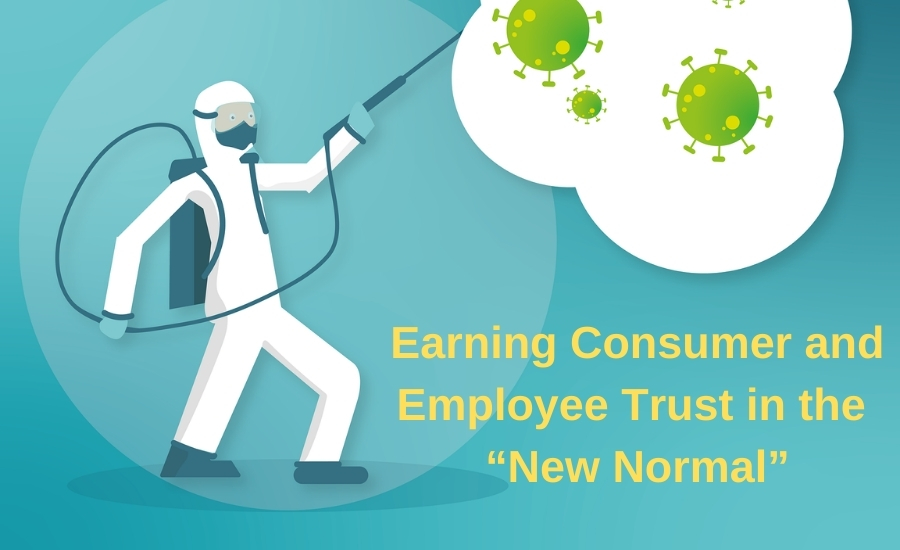If we’ve learned anything in 2020, it is that COVID-19 has fundamentally changed the way we think about “clean.” Hygiene and disinfection are now top-of-mind for all of us, and we know this “new normal” presents a unique set of challenges for businesses everywhere. In fact, 88% of consumers are more likely to frequent a business with clear cleaning and disinfection protocols, according to a Kantar U.S. 2020 study.
Consumer risk tolerance has also declined over the course of 2020, according to the same study. Mundane activities now involve a higher level of risk than they used to, and 62% of consumers stated that they’re more cautious about everyday activities. People are hungry for normalcy, but they want to get there safely.
For businesses, this means adapting to, and navigating, the “new normal” in real time to ensure their employees and consumers know and see that they’re taking the steps necessary to help foster clean and hygienic environments. And of course, protection extends to all employees, not just the ones who clean. The front of house receptionist or cashier for example, should have cleaning products like wipes made available to them as well.
Luckily, there are many clear steps that businesses can take to instill confidence in consumers sand turn them into advocates:
- Routinely clean and disinfect surfaces
Especially in areas where there is heavy foot traffic and customer volume, it is important to disinfect high-touch surfaces regularly to prevent the spread of illness-causing germs. It is also important to remember that cleaning and disinfecting are not the same thing. Cleaning removes dirt and microorganisms from a surface but can leave behind microbes that can potentially cause infection. Disinfecting, on the other hand, can kill and inactivate bacteria and viruses that remain on surfaces. Disinfectants can produce a significantly greater reduction in the frequency of contaminated surfaces than detergent-based cleaners.
Germs naturally gather in higher volume on common-touch surfaces, and studies show that areas with the highest risk of transmitting pathogens are the hands and commonly touched surfaces. Make sure to disinfect high-touch surfaces in your business regularly to help kill illness-causing germs and bacteria.
-
Understand the Environmental Protection Agency’s (EPA) List N
-
A useful resource to select the right disinfectants is the EPA’s List N which outlines the products that can be used against and have been proven by the EPA to kill SARS-CoV-2, the virus that causes COVID-19, such as Lysol Disinfecting Wipes and Lysol Disinfectant Spray. Knowing the type of surface you're cleaning and following the label instructions on how long to leave the surface untouched, are extremely important when disinfecting.
- Clean properly
Make sure that when cleaning, the proper steps are followed for maximum effectiveness, and avoid improper cleaning techniques. For example, cloths and rags can become contaminated when cleaning – and can redeposit contaminants on surfaces if they’re re-used – so it is important to replace them often and switch cloths for different surfaces.
- Disinfect properly
Just like cleaning, it’s important to disinfect properly as well. Being cognizant of surface type and leaving surfaces untouched for the contact time per label are extremely important factors when disinfecting. Newer and smoother surfaces are easier to disinfect than abraded or soft surfaces, which tend to make it easier for germs and bacteria to hide. Make sure you are selecting the proper disinfectant for the surface type you’re using it on, and follow the directions outlined on the product label.
- Establish and communicate protocols to both employees and customers
Establishing disinfecting and cleaning protocols and procedures should be supported by clear communications. Sharing information about cleaning and disinfecting protocols with employees and customers, as well as other guidelines such as social distancing and mask wearing, helps make sure that everyone feels protected and is aware of the actions being taken to promote a safe and hygienic experience.
- Enforce protocols with everyone
In the same vein, protocols and procedures need to be enforced strictly for maximum effect. No individual in a business – whether an employee, contractor or consumer – should be above compliance with the established protocols for cleaning, disinfecting or other guidelines such as social distancing.
- Give the consumer control
Where possible, allow consumers to have a measure of control when it comes to cleaning and disinfection. According to a study conducted by RB Business Solutions, 68% of air travelers said that having access to disinfection products at airports and on aircraft is the most important factor in considering traveling, and 25% of people said that being able to disinfect on their own would make them feel safest getting back into a rental vehicle.
- Trust the experts
Working with a trusted cleaning and disinfection partner like Lysol and RB Business Solutions is key to establishing best-in-class protocols. In addition to cleaning and disinfection practices, promote general healthy habit practices endorsed by groups like the CDC (Centers for Disease Control and Prevention), including social distancing and mask wearing.
The above article cites Kantar U.S. MONITOR 2020 (June) and Kantar U.S. MONITOR 2020 (August)

Recent Comments
article review`
Agility
Information
Thanks for sharing this with us here....
Great Post. Thanks for sharing with us a...